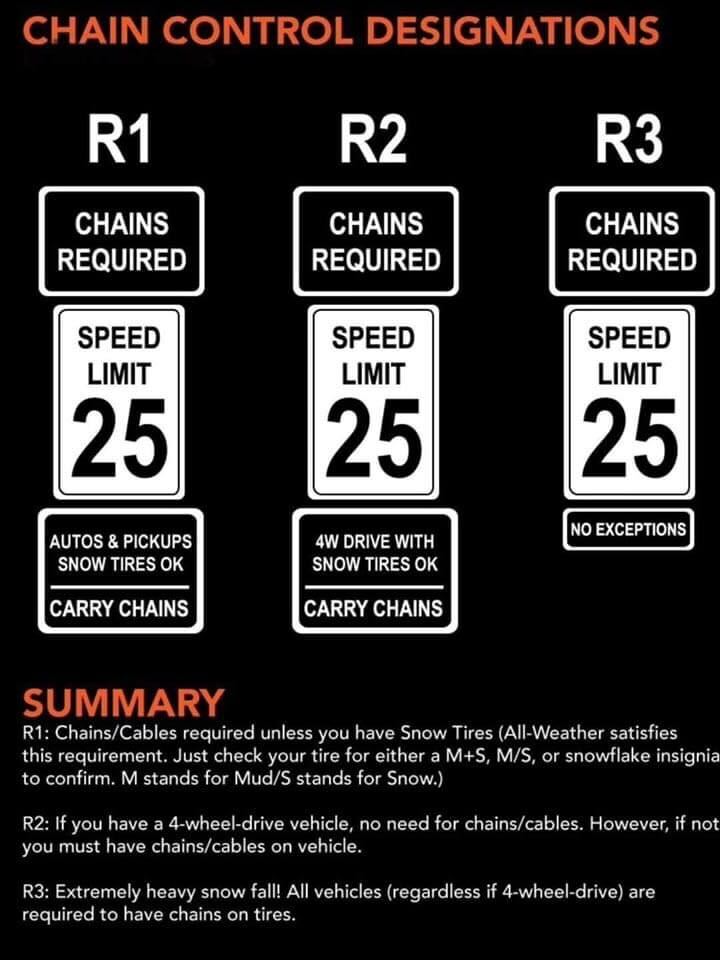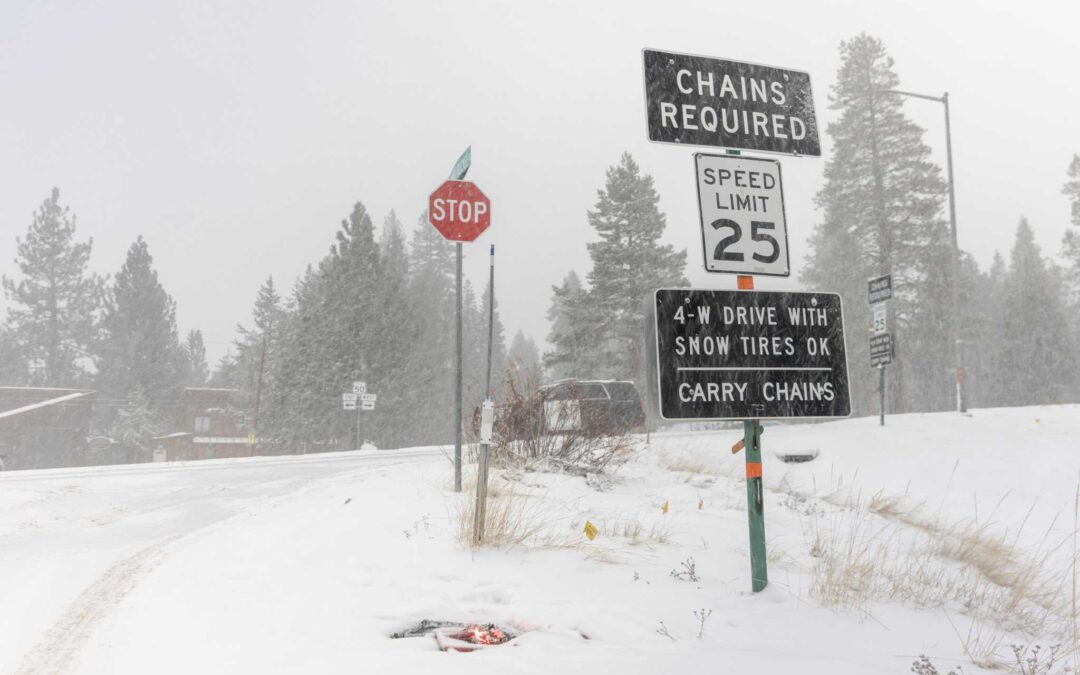Winter is here and you may have noticed our regular mention of the CHP Chain Control notices over on our Daily Snow Clearing Updates page, but what even is chain control? In short, chain control is a section of roadway where motorists must put on chains when highway signs indicate that chains are required. You can be cited by the California Highway Patrol and fined if you don’t. You will usually have about a mile between “Chains Required” signs and the checkpoint to install your chains.
To help our local community better understand chain control we pulled the following information directly from CalTrans Chain Controls / Chain Installation Page. We also provided you a How To: Install Chains from Mountain Hardware & Sports once you have learned more about what chain control is and what levels there are.
Chain Control Explained
During the winter months, motorists may encounter traction chain controls in the mountain areas within California. When chain controls are established, signs will be posted along the road indicating the type of requirement. There are Three Levels of Chain Requirements in California:
- Requirement 1 (R-1): Chains are required on all vehicles except passenger vehicles and light-duty trucks under 6,000 pounds gross weight and equipped with snow tires on at least two drive wheels. Chains must be carried by vehicles using snow tires. All vehicles towing trailers must have chains on one drive axle. Trailers with brakes must have chains on at least one axle.
- Requirement 2 (R2): Chains or traction devices are required on all vehicles except four-wheel/all-wheel drive vehicles with snow-tread tires on all four wheels.
NOTE: (Four-wheel/all-wheel drive vehicles must carry traction devices in chain control areas.) - Requirement 3 (R3): Chains or traction devices are required on all vehicles, no exceptions.
Truckers, see our Truck Chain Requirements page.
R-1 and R-2 are the most common conditions. A highway will often be closed before an R-3 condition is imposed. Some local areas may use variations of these designations. You must follow the directions on the signs posted for chain controls or any instructions given by Caltrans or CHP personnel at chain control check points, even if these are at variance with broadcast road condition reports or information contained herein.
1 Snow-tread Tires: The California Vehicle Code, Section 558 defines a snow-tread tire as follows, “A ‘Snow-tread tire’ is a tire which has a relatively deep and aggressive tread pattern compared with conventional passenger tread pattern”. Snow-tread tires can be identified by examining the sidewall of the tire where the letters MS, M/S, M+S or the words MUD AND SNOW have been stamped into the sidewall.
2 Tire Traction Devices: The California Vehicle Code, Section 605 defines tire traction devices as follows: “Tire Traction Devices are devices or mechanisms having a composition and design capable of improving vehicle traction, braking and cornering ability upon snow or ice-covered surfaces. Tire traction devices shall be constructed and assembled to provide sufficient structural integrity and to prevent accidental detachment from vehicles. Tire traction devices shall, at the time of manufacture or final assembly, bear a permanent impression indicating the name, initials or trademark of the assembling company or primary manufacturer, and the country in which the devices were manufactured or assembled in final form.”
The full, searchable version of the California Vehicle Code is available at: Leginfo, the website for California Legislative Information.
Please note: The California Department Of Transportation (Caltrans) reserves the right to prevent any vehicle from entering a chain control area when it is determined the vehicle will experience difficulty in safely traveling the area.


